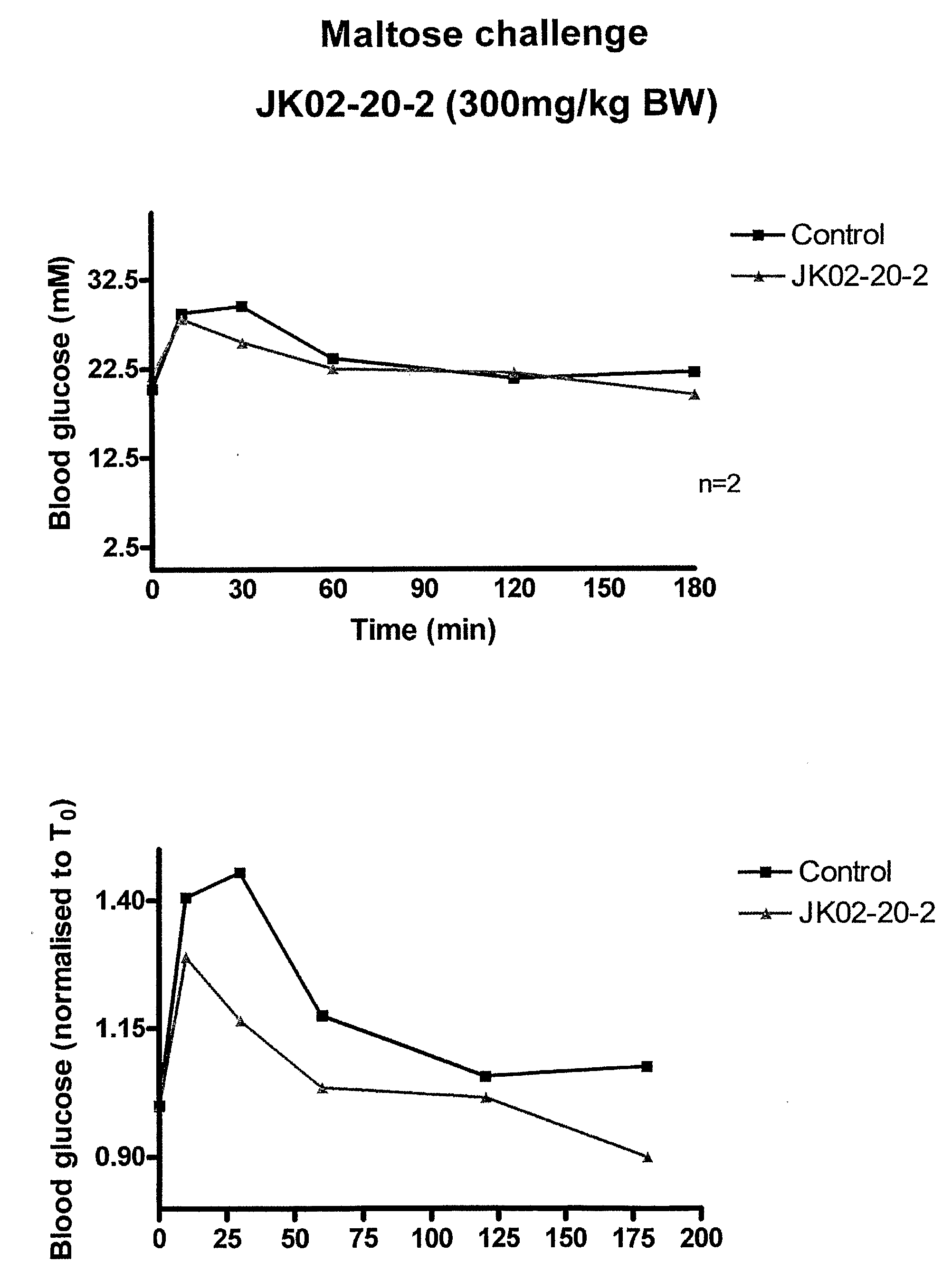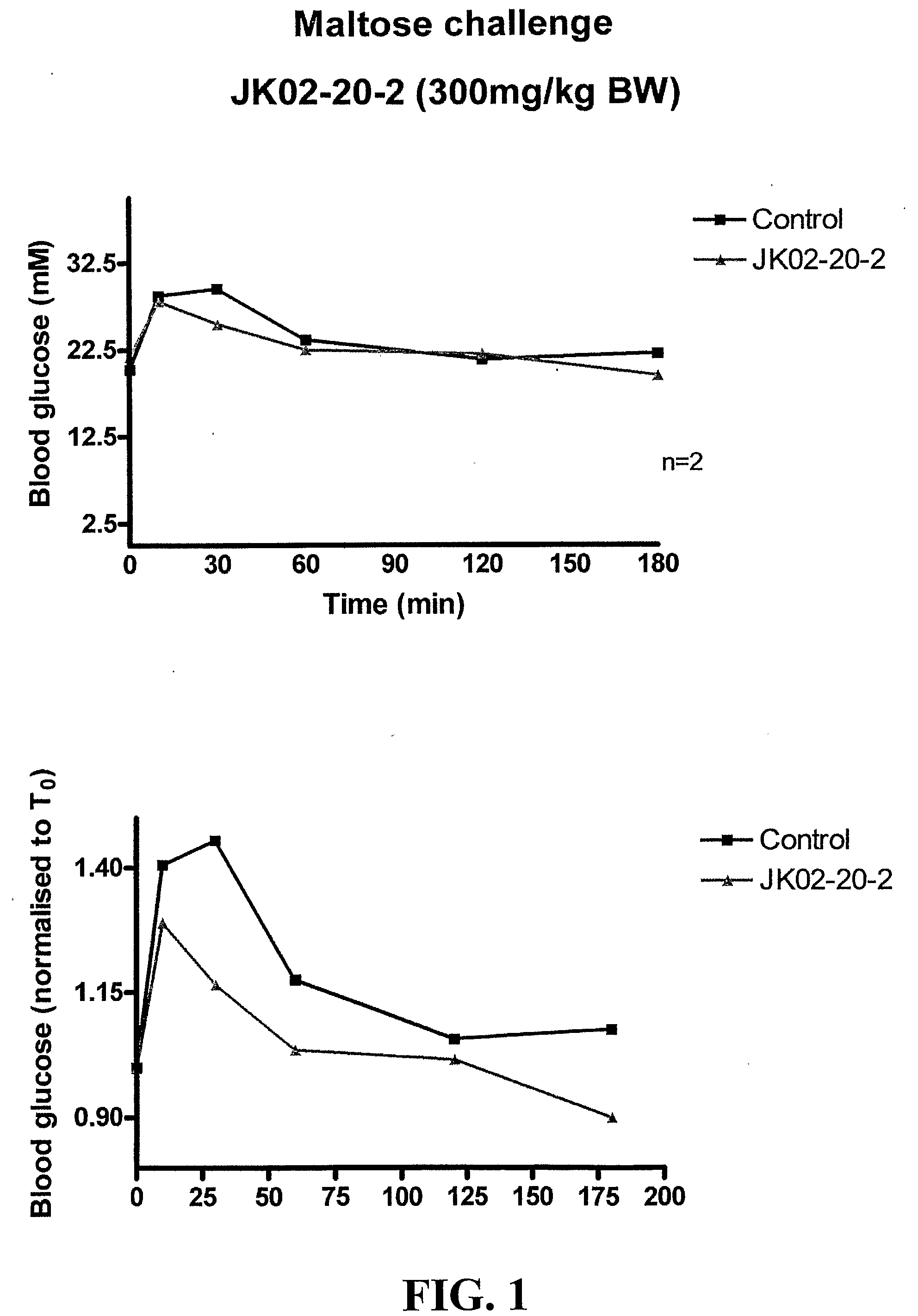Ascophyllum Compositions and Methods
a technology of ascophyllum and composition, applied in the preparation of sugar derivatives, sugar derivatives, biocide, etc., can solve the problems of limiting the use of ascophyllum, releasing insulin by the pancreas may also be defective, and relatively inadequately, and achieves the effect of valuable medicinal properties
- Summary
- Abstract
- Description
- Claims
- Application Information
AI Technical Summary
Benefits of technology
Problems solved by technology
Method used
Image
Examples
example 1
[0127]This example demonstrates that highly polymeric phenolic components from Ascophyllum nodosum have antioxidant and antidiabetic properties.
Material and Methods
[0128]Ascophyllum nodosum: Three Ascophyllum nodosum samples were used, including ON227 (collected from Nova Scotia coast, freeze-dried and milled), Asco-#40 (from Acadian Seaplants Ltd., Dartmouth, Nova Scotia, Canada), and Rockweed powder (from Maine Coast Sea Vegetables, Inc., Franklin, Me., U.S.).
[0129]Polyphenol content determination: Total phenol content of samples were measured by a modified Folin-Ciocalteu method on 96-well microplate (Singleton et al, 1999; Zhang et al, 2004).
[0130]Molecular size determination: Samples were analyzed by SEC-MALS-RI (size exclusion chromatography-multi angles laser scattering-refractive index). Sample preparation involved dissolving the samples in chloroform. The solutions were filtered using 0.2 μm sterile filters, and analyzed using Tosohaas TSK gel column (Alpha-M 7.8×300 mm, 13...
example 2
[0149]This example demonstrates that sulfated polysaccharides from Ascophyllum nodosum lower blood glucose levels and have an immune-stimulating effect.
Materials and Methods:
[0150]Ascophyllum nodosum materials: Three Ascophyllum nodosum samples were used for the investigation, including ON169 (collected from Nova Scotia coast, freeze-dried and milled), Asco-#40 powder (from Acadian Seaplants Ltd., Dartmouth, Nova Scotia, Canada), and Rockweed powder (from Maine Coast Sea Vegetables, Inc., Franklin, Me., U.S.).
[0151]Determination of sulfated polysaccharides content: A 96-well microplate method (Zhang et al, 2004). Briefly, 1˜2 mg of sample was dissolved in water, centrifuged and then diluted to prepare a final sample solution with a concentration of 100˜200 μg / mL. 20 μL of this sample solution was loaded on the microplate, mixed with 100 μL dilute HCl (pH 1.5), and 80 μL Methylene Blue (MB) solution (43.5 μg / mL). The absorbance at 660 nm was recorded and the sulfated polysaccharides ...
example 3
[0173]This example demonstrates the antidiabetic efficacy of Ascophyllum nodosum fractions in vivo. This study involved a 4-week treatment experiment with streptozotocin-induced diabetic mice (Experiment 1), a glucose challenge experiment on diabetic mice (Experiment 2), and a sucrose challenge experiment on diabetic mice (Experiment 3).
Study Design and Protocol
PUM
| Property | Measurement | Unit |
|---|---|---|
| molecular weight | aaaaa | aaaaa |
| molecular weight | aaaaa | aaaaa |
| average molecular weight | aaaaa | aaaaa |
Abstract
Description
Claims
Application Information
 Login to View More
Login to View More - R&D
- Intellectual Property
- Life Sciences
- Materials
- Tech Scout
- Unparalleled Data Quality
- Higher Quality Content
- 60% Fewer Hallucinations
Browse by: Latest US Patents, China's latest patents, Technical Efficacy Thesaurus, Application Domain, Technology Topic, Popular Technical Reports.
© 2025 PatSnap. All rights reserved.Legal|Privacy policy|Modern Slavery Act Transparency Statement|Sitemap|About US| Contact US: help@patsnap.com



